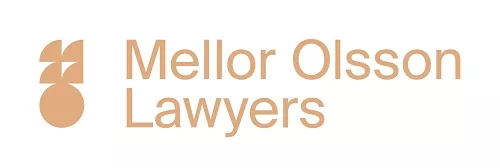- within Transport topic(s)
- with Senior Company Executives, HR and Finance and Tax Executives
- with readers working within the Accounting & Consultancy, Basic Industries and Business & Consumer Services industries
In 2011, Safe Work Australia developed a single set of Work Health and Safety (WHS) laws which have been implemented almost nationwide. These are referred to as 'model' laws and to date, only Victoria and Western Australia have not enacted them.
The model laws consist of the model WHS Act, model WHS Regulations and model Codes of Practice and are established under a three tier system. The model Codes of Practice provide guidance on how to comply with the legal obligations prescribed in the Act and Regulations and are intended to compliment the legislation.
These model laws were the subject of a comprehensive review in 2018 by Marie Boland, the former Executive Director of Safework SA.
Why the need for a review?
The purpose of the review was to examine how the model WHS laws are operating in practice, whether the objective of the WHS Act 'to provide for a balanced and nationally consistent framework to secure the health and safety of workers and workplaces' is being achieved and whether there have been other unintended consequences.
The terms of reference for the review focussed on:
- what is working and why;
- will it continue to work in the future;
- what doesn't work and why; and
- what could be done to make it work.
The WHS legislative framework aims to minimise risks arising from work and in workplaces and protect the health, safety and welfare of all workers.
The WHS Act seeks to ensure a fair and reasonable process for resolving health and safety issues in the workplace by encouraging cooperation between unions and employer organisations to improve work health and safety practices, promote education and training on work health and safety, and includes compliance and enforcement measures for breaches.
Findings and recommendations
In the final report (which can be found here), Ms Boland states:
"Businesses say that they find it difficult to navigate their way through the three tiers of the laws to select those aspects that specifically apply to them. Many small businesses in particular continually raised questions about how they should assess the risks and hazards in their workplace and what actions they should take to fulfil their WHS obligations."
In terms of findings, Ms Boland states:
"The model WHS laws are largely operating as intended but I am recommending some changes to provide clarity and to drive greater consistency in the application and enforcement of the laws across jurisdictions ... The three-tier legal framework is widely supported, and there is a view that it is sufficiently flexible to accommodate the evolving nature of work and changing work relationships"
The report makes 34 recommendations. A significant number of these relate to consultation requirements and developing or amending model codes to provide greater assistance and clarity to employers and workers on WHS obligations and best practices. One such example includes to, "update the model Code of Practice: Work health and safety consultation, co-operation and co-ordination to include practical examples of how meaningful consultation with workers can occur in a range of traditional and non-traditional settings."
Further recommendations include:
- That model WHS Regulations be amended as a matter of priority to "deal with how to identify the psychosocial risks associated with psychological injury and the appropriate control measures to manage those risks";
- An increase in maximum penalties attached to breaches of the legislation, and further, that a separate offence for Industrial Manslaughter be included in the WHS Act; and
- Expanding the scope of Category 1, the most serious of offences, to capture 'grossly negligent' conduct or behaviour, as well as the existing 'reckless' conduct.
What does this all mean for your business?
The report is currently with the relevant Ministers and it will be some time before any changes to the WHS laws are in place. However, this provides time for businesses to review their existing policies and practices, or develop new policies and procedures. What is certain is that changes will be implemented as a result of this review and it is important that both businesses and workers have a clear understanding of their responsibilities under WHS laws.
The content of this article is intended to provide a general guide to the subject matter. Specialist advice should be sought about your specific circumstances.
[View Source]

